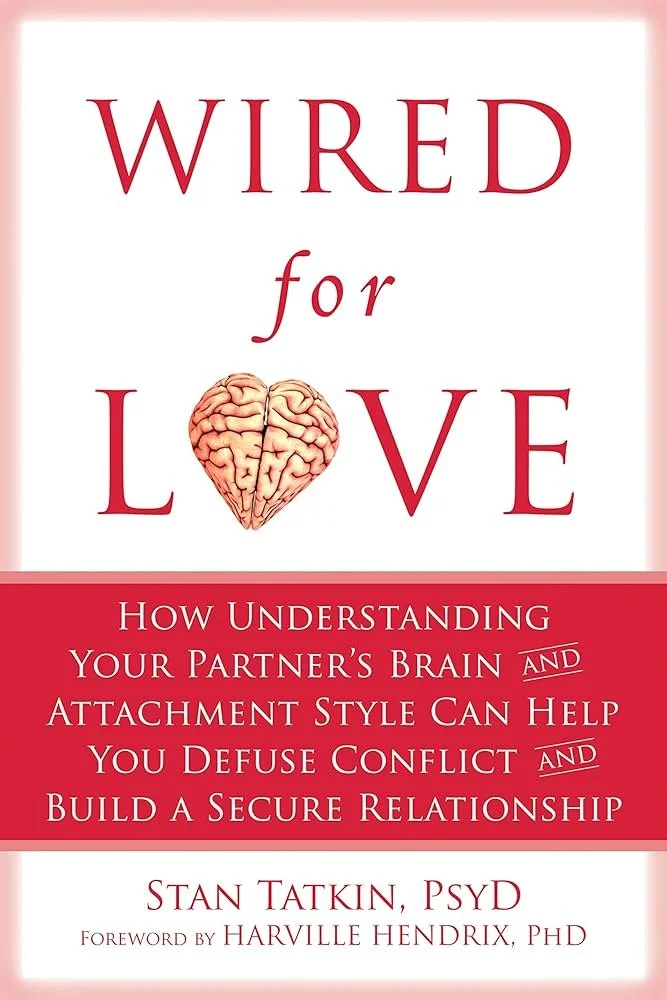Book Report: Wired for Love: How Understanding Your Partner’s Brain and Attachment Style Can Help You Defuse Conflict and Build a Secure Relationship by Stan Tatkin
Wired for Love, authored by Stan Tatkin, a psychotherapist and expert in adult attachment, integrates neuroscience and psychology to provide practical tools for building strong, secure relationships. The book explores how understanding your partner's brain and attachment style can help create long-lasting, harmonious partnerships. Tatkin argues that many relationship problems stem from unconscious patterns in the brain and nervous system, and that by learning how these systems work, couples can foster more secure and loving connections. The book is particularly insightful for those seeking to understand the science behind relationships and how to use that knowledge to enhance their romantic lives.
Summary: Tatkin opens the book by explaining how human beings are "wired" for connection, rooted in our biological need for secure attachments. Drawing from attachment theory, he outlines three basic attachment styles: secure, anxious, and avoidant. He explains that these styles shape how individuals behave in relationships and how they respond to stress or conflict.
The book’s central concept is the idea of the “couple bubble,” a psychological and emotional space that couples create together to foster safety and security. Tatkin argues that by prioritizing the relationship above external distractions, couples can create a protective “bubble” that strengthens their bond and defuses potential conflicts. The couple bubble represents a commitment to mutual care and support, where both partners are responsible for each other’s emotional well-being.
Tatkin integrates brain science into his relationship advice, explaining how the brain’s automatic responses to perceived threats can often lead to conflict in relationships. He introduces the idea that our brains are constantly scanning for danger, and when triggered, the brain can react with fear or anger. However, understanding these automatic responses allows couples to better manage conflicts, recognizing that much of their behavior is driven by unconscious reactions rather than deliberate choices.
The book offers ten guiding principles to help couples navigate their relationship in a more mindful and secure way. These principles cover a range of topics, including how to manage emotions, how to resolve conflicts, and how to cultivate a deeper understanding of each other’s needs. Throughout the book, Tatkin offers practical exercises and examples to help couples apply the principles in real-life situations.
Themes:
Attachment and Security: A core theme in Wired for Love is the importance of understanding attachment styles. Tatkin emphasizes that secure attachments are crucial for healthy relationships, and he provides tools to help couples create a secure bond, regardless of their individual attachment styles.
The Couple Bubble: The “couple bubble” is one of the book’s central metaphors. It represents a safe, protective space that couples build together by prioritizing each other’s needs and well-being. This concept underscores the importance of mutual care, safety, and emotional support.
Neuroscience of Relationships: Tatkin integrates brain science into his relationship advice, explaining how the brain’s automatic responses to perceived threats can cause unnecessary conflict. He argues that understanding the brain’s mechanisms can help couples prevent reactive behaviors and promote healthier, more conscious interactions.
Conflict Resolution: A recurring theme is the idea that conflicts often arise from miscommunication or misunderstanding rather than actual disagreements. Tatkin provides strategies for resolving conflicts by focusing on emotional regulation and effective communication, rather than allowing the brain’s fear response to take over.
Mutual Dependence: Tatkin challenges the notion that romantic partners should be fully independent. Instead, he advocates for interdependence, where partners recognize that they rely on each other for emotional stability and security, and that this reliance is not a weakness but a strength in a healthy relationship.
Analysis: Wired for Love is a unique blend of neuroscience, psychology, and practical relationship advice. Tatkin's approach sets the book apart from other relationship guides because it focuses on the biological and neurological underpinnings of behavior, rather than solely on communication strategies or emotional management. This scientific perspective helps readers understand why certain behaviors occur in relationships and how they can be mitigated or altered for the better.
One of the strengths of the book is its accessibility. While Tatkin delves into complex topics like brain functioning and attachment theory, he explains these concepts in a way that is easy to understand and apply. The book is filled with real-life examples, case studies, and exercises that make the content relatable and actionable for readers.
The concept of the “couple bubble” is particularly valuable. It reframes relationships as partnerships where both individuals are responsible for maintaining a safe, emotionally supportive environment. This shift away from individualistic perspectives on love to one that focuses on mutual care and security can be transformative for couples struggling with conflict or insecurity.
However, some readers might find the book’s focus on neuroscience too technical at times, especially if they are looking for more straightforward relationship advice without the scientific framework. Additionally, couples who are not familiar with attachment theory might need to spend more time understanding how their individual attachment styles influence their behaviors before they can fully apply Tatkin’s principles.
Conclusion: Wired for Love is a thoughtful and science-based guide to building secure and healthy relationships. Stan Tatkin’s integration of neuroscience and attachment theory offers readers valuable insights into how the brain and nervous system affect relationships and provides practical strategies for fostering emotional security and connection. The book’s emphasis on the “couple bubble” encourages partners to prioritize their relationship and commit to mutual care, creating a protective environment where both individuals can thrive. Wired for Love is an essential read for couples seeking a deeper understanding of themselves and their partners, and for anyone looking to build more secure, resilient romantic connections.
I’m a Sex Counselor and Yoga Teacher. I work with individuals, couples, non-monogamous relationships, and groups in topics related to sexuality, emotional regulation, communication dynamics, and changing behaviors.


